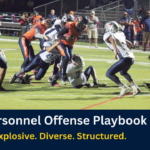Determining Your Work-ons | Off-season Improvements

One of the most difficult things to do, regardless of the sport or activity, is to work on your weaknesses. Even though we know in our brains these are where we should put the majority of our time and energy, it is much more fun to work on things that we are good at, so many times we don’t work on our weaknesses and instead get better at our strengths.
Determining Your Work-ons | Off-season Improvements
As a coach it’s important that you develop your team, one of the most efficient ways to do this is to improve their weaknesses. To do this effectively you must establish a plan to improve these areas so you aren’t wasting your time. There are a variety of different ways to do this but the majority of plans are based on three main stages. First you need to identify a weakness, then develop stages of skill development to improve the skill, and finally evaluate the improvement of the skill.
The first stage of identifying the weakness is probably one of the most critical stages. There are a variety of different ways to identify the problem but I have always preferred a data based approach to truly see where the problem lies. It’s very easy to miss a pass on 4th down and think that your team struggles to complete that pass when in reality it completes the route over 70% of the time. This is why it’s important to have concrete evidence to fully evaluate where your team needs to improve.
One of the key parts of identifying the weakness is to get your team involved. Due to the nature of coaching, many times coaches identify this problem in a staff meeting and never really communicate it to the team, they just expect them to know. If you inform your team on why you are focusing on a specific play or skill set they are more likely to engage in meaningful practice reps.
Once you have established the areas that need work the second stage is to develop a strategy to improve those skills. The key here is to narrow the skill down to as small of chunks as possible. It’s easy to say we need to get better at a certain route and then run the route endlessly. It is much more efficient to breakdown the skill into specific parts. As you go through drilling these parts you will quickly see which area has the deficiency. This will let you narrow your focus to provide more targeted drills.
The final step is to evaluate. Once you have worked on the specific skill it’s time to evaluate the success of the drill. Again, I am a fan of using statistics to evaluate the improvement. By using the same methods you used to determine there was a deficiency you can measure the improvement and compare the two.
While this seems like a very simple procedure it is easy to forget these steps during the season. Many coaches and teams get focused on preparing for the upcoming team and lose sight of improving their own skill sets. By using this method throughout the season you can ensure that your team is developing and is playing it’s best football at the end of the season.
(See Also) Getting the most out of Coaching Clinics











